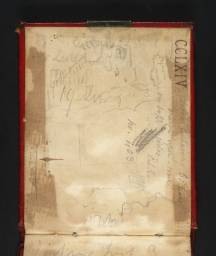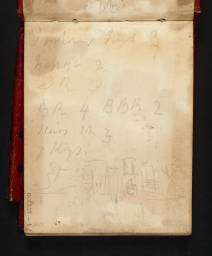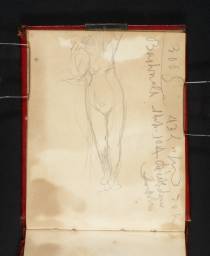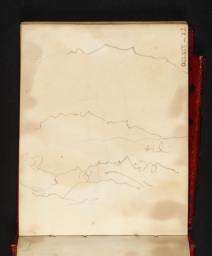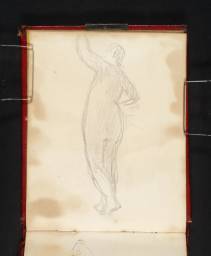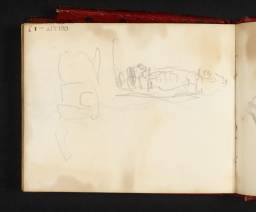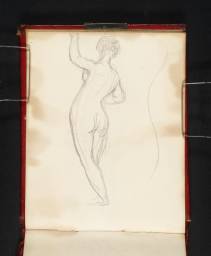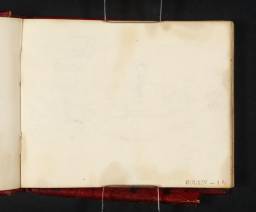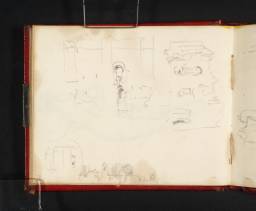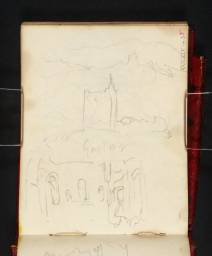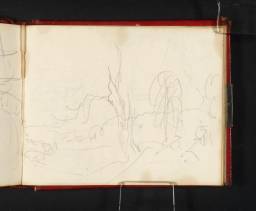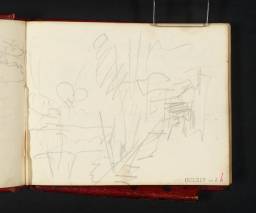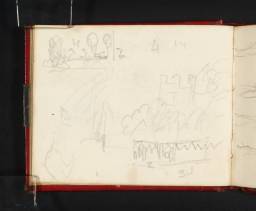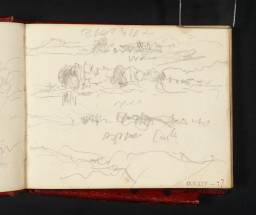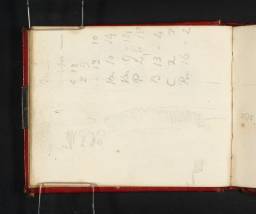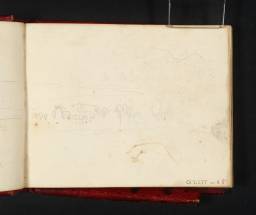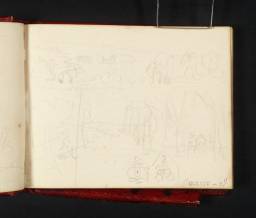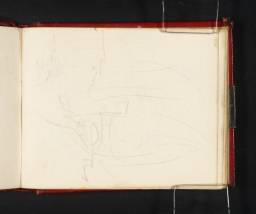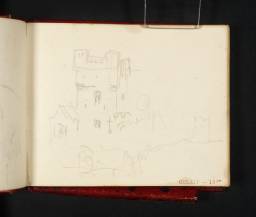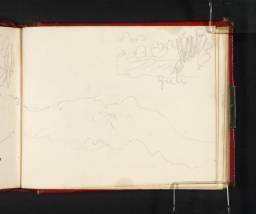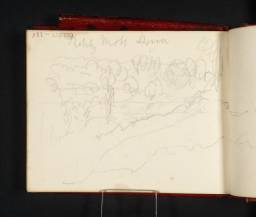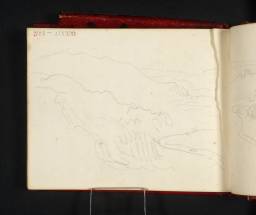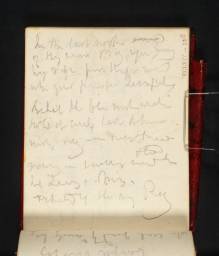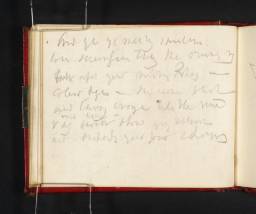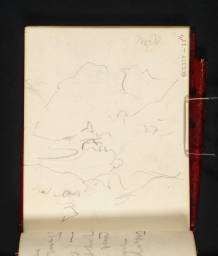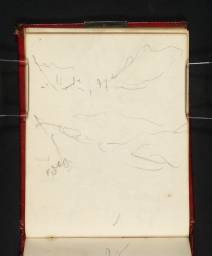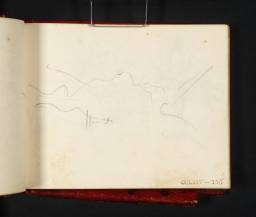Turner Bequest CCLXIV
Memorandum book bound in red leather with pencil pocket and one broken brass clasp.
64 pages of white wove writing paper watermarked ‘W BROOKMAN | 1829’ and ‘W BROOKMAN | 1830’ made by William Brookman at Test Mill, Romsey in Hampshire.
Approximate paper size 74 x 94 mm.
Numbered ‘403’ as part of the as part of the Turner Schedule in 1854 and endorsed by Turner’s executors on the inside front cover (D41065).
64 pages of white wove writing paper watermarked ‘W BROOKMAN | 1829’ and ‘W BROOKMAN | 1830’ made by William Brookman at Test Mill, Romsey in Hampshire.
Approximate paper size 74 x 94 mm.
Numbered ‘403’ as part of the as part of the Turner Schedule in 1854 and endorsed by Turner’s executors on the inside front cover (D41065).
Accepted by the nation as part of the Turner Bequest 1856
Exhibition history
References
This small pocket book was used by Turner on his way to Scotland in 1831. Although it is the first of the Scottish books in Finberg’s Inventory,1 Turner in fact used the Minstrelsy of the Scottish Border (Tate D25762–D25928; D41077–D41078 complete group; Turner Bequest CCLXVI) sketchbook before this one on the tour for sketches of Liverpool (Tate D25763–D24775; Turner Bequest CCLXVI 1a–7a). Rokeby and Appleby may have been used first in 1830 as accounts at the back of the book (folio 64 verso; D25643) are dated to that year.2
A few nude figure studies at the beginning of the book were perhaps made in preparation for Turner’s role as Visitor to the Royal Academy Schools.3 Turner was Visitor to the Life Academy eight times including in 1830 and 1831, and a sketch on folio 3 verso of this sketchbook may show his research and preparation for the role with a sketch of a female figure posed according to Hogarth’s ‘Line of Grace’, which is also drawn alongside it (see folio 3 verso; D25529). Two pages include notations of addresses (folios 1 verso and 52 verso; D25525, D25624) and there are further inscriptions on folio 12 (D25546). Several studies towards the back of this sketchbook (folios 57–58; D25631–D25633) are also unconnected to the Scottish tour. Some or all of these may have been made prior to the journey.
The name of the sketchbook was probably taken from inscriptions on folios 15 verso, 30 and 51 (D25553, D25581, D25620) referring to the two locations. Most of the sketches depict sites within the vicinity of these two places or between them. Near Rokeby, Turner sketched the junction of the Greta and Tees Rivers (folios 8 verso–9; D25539–D25540) with Mortham Tower, Bowes (folio 4 verso; D25531) and Bernard Castles (folio 55 verso; D25628), all for illustrations to Sir Walter Scott’s Poetical Works. Egglestone Abbey, though not a subject considered for illustration also interested the artist. Turner had sketched the ruin and many of these other locations on his North of England tour of 1797 and again in 1816 during a tour of Yorkshire.
Although not considered for illustrations, Turner was inspired to take up his pencil as he passed through the East Cumbrian town of Brough roughly halfway between Rokeby and Appleby, sketching views of the Eden Valley and several interesting antiquities (see folio 36; D25593). This route may account for a number of rough mountainous landscape sketches scattered throughout the book.
The sketchbook also covers parts of the Lake District, with sketches around Keswick (e.g. folio 24; D25570) including a sketch that contributed to Turner’s Skiddaw design (folio 44 verso; D25610). The lakes are covered in more detail in the Minstrelsy of the Scottish Border sketchbook (see Tate D25796; Turner Bequest CCLXVI 18a).
Peter Bower, Turner’s Later Papers: A Study of the Manufacture, Selection and Use of his Drawing Papers 1820–1851, exhibition catalogue, Tate Gallery, London 1999, pp.51 cat.23.
How to cite
Thomas Ardill, ‘Rokeby and Appleby sketchbook 1831’, sketchbook, September 2009, in David Blayney Brown (ed.), J.M.W. Turner: Sketchbooks, Drawings and Watercolours, Tate Research Publication, December 2012, https://www

